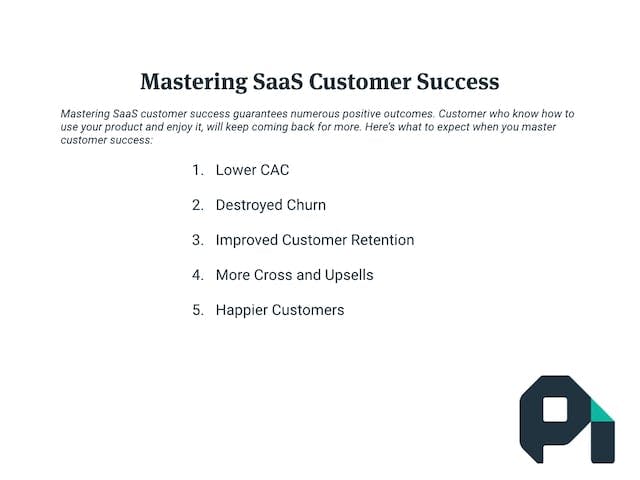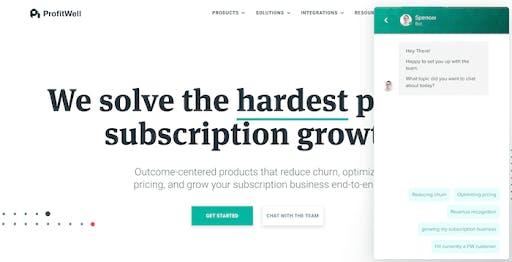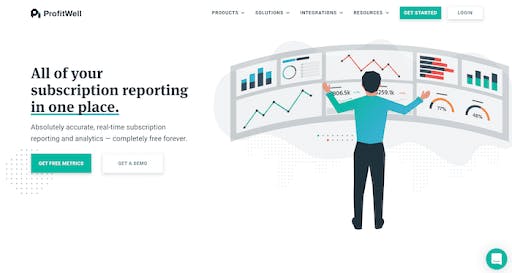Customer success (CS) is incredibly important to implement and measure when you’re in the SaaS subscription space. Don't risk losing customers early on.
So you have a great product, but what about the people who use it? I’m talking about your customers—the people up close and personal with your product or service. Your customer base can either make or break your company. It’s up to you to make their experience with your company a great one.
Mastering customer success is vital in the subscription space. Let’s face it, if someone isn’t having a positive experience with your product, then they’ll take their business elsewhere. Not implementing and measuring customer success means you risk losing customers and rising customer acquisition costs (CAC).
To help you on your mission toward mastering customer success, I’ll break down what customer success truly means, what happens when you master it, and best practices to employ.
What is customer success?
Customer success is a business strategy focused on helping customers achieve their desired goals and outcomes when using your products and services. It involves providing customers with dedicated support and resources to help them see the most possible value from their relationship with your business. The goal of customer success is to create loyalty through satisfaction, so customers continue to use your product or service for years to come.
5 benefits of mastering SaaS customer success
Mastering SaaS customer success undoubtedly results in positive outcomes. Customers who know how to use your product and enjoy it, will continue using it. If their experience is extraordinary, they may even recommend your product to other people.
Some direct outcomes include:vlower CAC, lower churn, improved customer retention, more cross-sells and upsells, and happier customers.
1. Lower CAC
Customer acquisition costs are the total cost of sales and marketing efforts that’s required to acquire a customer. CAC is the defining factor in whether your SaaS company has a viable business model. The challenge with CAC is spending the right amount to drive new customers to your service without sacrificing lifetime value, or LTV.
If a customer signs up for a month of service but never makes it past the onboarding tutorial, they may end up terminating the contract. This is harmful to your company because all of your investment and effort spent on the customer goes down the drain.
There are some steps you can take to reduce CAC: Optimize your marketing funnel and pricing strategy, strengthen your marketing and sales approach, and focus on inbound marketing by producing valuable content. All of these steps are arguably customer success. While there’s not a direct relationship between CAC and customer success, spending ample time creating promoters will drive net new traffic, ultimately lowering CAC.
If you think about it, focusing on inbound marketing and creating digestible content for your users, is a form of customer success.
2. Destroy churn
Mastering customer success will help you destroy churn. You crush churn when your customers succeed using your products. Lower churn results in happier customers, and happier customers mean higher revenue.
In order to destroy churn, you need to understand why churn happens. Most of the reasons for churn begin with customer satisfaction. If you increase your focus on customer success, the natural outcome will be lower churn rates. Destroying churn boils down to making a concerted effort in understanding your customer and their needs, getting them involved with your product, and maintaining satisfaction.
3. Improve customer retention
Customer retention and lower churn directly impact each other, meaning that when churn goes down, you retain more customers.
If your customer retention has improved, it indicates that your team and departments have aligned their internal objectives—making the customer the focus in all aspects of your business.
4. Make more cross and upsells
Mastering customer success produces an increase in cross-sells and upsells. Customers who succeed and are satisfied using your product or service may want to purchase add-ons or move to a more premium product. Facilitate ways in which your product or services can exceed your customers’ expectations.
Proactive customer success, if done correctly, helps your customers maximize the value they receive from your product. When your customers obtain value, they will likely come back for more.
5. Create happier customers
Nobody wants unhappy customers. Isn’t the real end goal of starting a business to serve those that have less than optimal options? Happy customers tell their friends, share on social media, and bring you more customers.
Having happy customers are great leverage for sales and marketing tactics. If you have open lines of communication with your happy customers, they may be willing to provide positive testimony about your product when asked.

Customer success best practices
We mentioned all the reasons why customer success is so crucial. And it has some pretty stellar outcomes. Now, let’s talk customer success best practices so you can make the outcomes detailed, a reality.
If you don’t have anyone at your company dedicated to customer success, you should. Customer success teams provide a voice for your customers within the company, meaning your customer success employees can bring to light customer concerns to the appropriate people in your company.
If you already have a customer success team, there’s always room for improvement.
1. Stop forcing onboarding
Onboarding works fantastic for some users, while others may not have the patience. Some people skip through onboarding and start experimenting. You need to make customer onboarding flexible.
Most products have a welcome tour or an onboarding experience to educate the user on how to use the product. You can make these experiences optional as long as you offer other educational tools for your customers. A good alternative are chatbots that can answer customer questions at any time.

2. Have quick links to help
Piggybacking off of the chatbot idea, have additional links for customers to easily access forums, instruction documentation, live chats, cobrowsing, and other educational resources. Don’t make the customer dig for information.
3. Reach out to those who are struggling
This is where having dedicated customer success employees is crucial. You’ll need people who have the bandwidth to communicate with customers. If within the first couple months a customer seems to be struggling or making no progress with the service or product, reach out. Scheduling a quick 20-minute phone call with a customer success representative will alleviate any stress on the customer’s end.
4. Keep in touch
Once those communication lines are open, do not close them. Staying in touch with your customers will make the relationships with your company and products more meaningful and stronger. Within the first month ask for feedback, and give out tips to new users. Make communication like this a regular routine with your customers.
5. Enact minimalist changes—slowly and overtime
Thinking of making changes to your product? Hold your horses. Slapping an entirely new interface on customers may stress them out, pushing them to leave. Implement slow, minimal changes overtime to get customers where they need to be. Having a series of smaller design changes will have better results than one big remodel.
6. Build multiple customer journeys
Like most things in life, customer product experience is about the journey not the destination. If you have built or created a customer journey template before, you know exactly what that entails. Build example customer journeys for all of your customer segments.
Bring together stakeholders from across product, design, engineering, and sales and then map out every part of the buying, onboarding, and activation process.
7. Monitor Metrics
Monitor metrics—it’s pretty important. Customer success metrics can be the early signs that something is going wrong or right. If you need assistance ProfitWell Metrics provides free, subscription metrics.

Customer success metrics worth tracking
There are dozens of variables when it comes to customer success metrics, but you don’t need to focus on all of them. Tracking the most important and adequate customer success metrics for your business will create valuable results. Some that you should track: onboarding engagement, onboarding completion time, net promoter score, active users, expansion revenue, and customer retention costs.
1. Onboarding engagement
Onboarding engagement tells you how many users engage in onboarding activities or choose to skip. If everyone is skipping an onboarding process for a particular product, you need to either reconfigure the onboarding steps or find a new way to educate customers on using the product, like installing a live chat.
2. Onboarding completion time
Tracking how long it takes customers to complete onboarding is crucial, as well. Let’s say customers tend to spend 24 hours on onboarding tasks but you have 70 outliers spending 100 hours on onboarding—you need to get in touch with those 70 customers to see why your onboarding process is taking so long. Time spent onboarding is time your customer can’t ever get back, so make it quick and worthwhile.
3. NPS
Tracking your net promoter score, or NPS, is an easy way to see how your customers think of you and how happy they are with your products.

4. Active users
Out of all your customers, you need to know how many are active users. This metric will tell you how many active users there are on your platform. If 15% of your users are not using your service or product at all, know for sure that they will churn out at some point. Determine inactive users so you can intervene and tailor a better product experience before they churn.
5. Expansion revenue
More upselling and cross selling can be a benefit of mastering customer success. Expansion revenue includes upselling and cross selling. Tracking expansion revenue is an incredibly useful metric to gauge how customers are growing in your business.
6. Customer retention cost
We often talk about customer retention but what about cost? How much are customers costing your support team?
The cost of your support team depends on how large your company is and how many customers you have. Tracking the cost of your customer support is a tradeoff between the money customers pay you and their lifetime value along with the salaries of your company’s customer support staff.
Invest in your customers
Your customer is the lifeline of your business. Understanding your customers’ needs, what they like and don’t like, is crucial. You can have a great product or service, but if you don’t understand your customer, then it’s not worth much.
Investing the time on your customers and their relationship with your product or service will deliver positive results—lower CAC, less churn, improved customer retention, more upsells and cross-sells, and happier customers.
Provide a unique and personalized experience, and your customers will stick around—they’ll know you’re paying attention.



